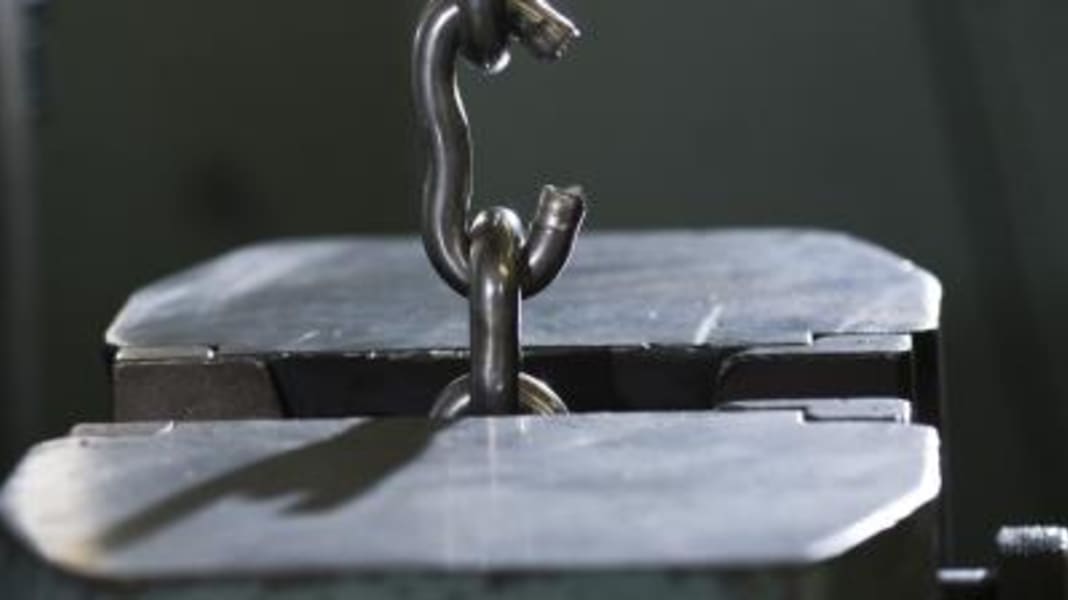
Stainless steel chains are among the "flatterers" of boat equipment. Their smooth, shiny surface is pleasant to the touch, and their solid heaviness inspires confidence and suggests: You can moor here with confidence.
But as the saying goes: every chain is only as strong as its weakest link. You can't tell from the outside how strong an anchor chain made of stainless steel really is. In general, it is difficult to tell chains apart, especially if they are manufactured according to the currently valid German industrial standard (DIN 766). The standard specifies the exact dimensions of the links. For example, a link of a 10 mm chain should be 28 mm long (inside diameter), 34 mm wide and the round steel must not deviate from the nominal thickness (10 mm). At first glance, this sounds exaggerated - after all, we are only talking about simple iron parts. However, thanks to the strict DIN standard, most anchor chains run smoothly over our anchor winches. This is because things only run smoothly if the individual links fit into the chain groove of the winch.
The fact that many skippers prefer an anchor chain to a line is partly due to the high breaking strength of the chain, and partly because the anchor simply holds better at the bottom if it is held in place by the weight of the chain.
At the boat chandlery, anchor chains are labelled according to the thickness of the chain links in millimetres. Thicknesses of less than 13 mm are available by the metre. Larger diameters are often supplied in so-called chain lengths (approx. 27 metres).
Anchor chain is available in two material variants in this country. The cheaper of these is the galvanised anchor chain, which costs on average a third of the price of the stainless steel chain. The disadvantage of galvanised chain is that it rusts and its surface is so rough that small "towers" often form in the chain box during hoisting, which can block the winch. Furthermore, the galvanised surface structure picks up a lot of smelly "mud" from the bottom, which has to be laboriously rinsed off if it is not to end up in the anchor locker.
Downloads:
download
